There are two basic formats a martial arts seminar can take. In the first, students are shown a new skill component. They practice the component amongst themselves until they understand it. They are then given a new component that builds on the first, and the process continues throughout the time available. At the end of this methodical building progression, the students have developed a new skill or skillset, which may be used in permutations as the seminar moves further. You have seen this format many times. It is the basic instructional design behind the majority of such training scenarios.
The second basic format a seminar can take is the immersion approach. This is much more rare. In a seminar of this type, students are shown a technique or method — one that may be quite complex. They are then turned loose to work with the material amongst themselves before a new method is demonstrated for them. In such an immersion of new material, many students will feel confused or lost. This is recognized as likely from the outset of the training. The purpose is to expose the student to as many new concepts as possible, allowing him or her to make connections to past training and to glean new techniques and principles as well as he or she may.
A Dan Inosanto seminar is a truly unique experience. I can say without hesitation that this gathering of 80 or so students was one of the largest training sessions I have attended. It was also the most immersive. I have never had so much material thrown at me so quickly, or been given so little time to “learn” it before moving on to the next segment of the training. There is a definite “sink or swim” element to Guro Inosanto’s teaching that will test the student’s patience, flexibility, and stamina. This, too, I must assume, is by design.
The seminar was held on October 27 and 28, 2012, at Tai Kai Martial Arts in Liverpool, NY, and hosted by Guro Kevin Seaman in cooperation with Tai Kai’s owner and chief instructor, Ken Kronenburg. Consisting of two 2.5-hour sessions each day, the seminar ran the gamut of styles and systems, both armed and unarmed, with which Guro Inosanto has extensive experience. No photography or video recording of Guro Inosanto was allowed. No outside observers not involved with the school or directly enrolled in the seminar were permitted. Students under Guro Seaman recorded many of the instruction segments with Guro Inosanto, presumably for internal use or for compilation in some official DVD release of some kind.
Multiple schools were represented and, on the morning of the first day, the various students tended to segregate themselves by “tribe.” Like school t-shirts sought like as the multiple groups found their fellows, although there was plenty of friendly exchange among them prior to commencement of the training. For my part I saw a great many people I knew from the Central New York martial arts community, which allowed me to renew some old friendships. I would also make some new friends. Networking of this type is always welcome, as the martial community — online and locally — is always smaller than we, its members, believe it to be.
 Day One started on what was, for most of us, familiar territory. Hubud-style empty hand drills, which have analogs in Kali and Kuntao, transitioned to striking- and lock-flows. These progressed to foot sweeps and takedowns, standing grappling, and then weapons work, as single escrima were used to facilitate locks, chokes, and even groundfighting (using the stick for additional leverage).
Day One started on what was, for most of us, familiar territory. Hubud-style empty hand drills, which have analogs in Kali and Kuntao, transitioned to striking- and lock-flows. These progressed to foot sweeps and takedowns, standing grappling, and then weapons work, as single escrima were used to facilitate locks, chokes, and even groundfighting (using the stick for additional leverage).
The second portion of Day Two was devoted to trapping, both “high” and “low,” all of these comprising various arm- technique combat drills that are a means of developing touch reflexes. There was also quite a bit of standing grappling and leg sweep takedown training mixed in, which paved the way for spending the remainder of the time on Jeet Kune Do and Silat “sticky leg” sweeps, takedowns, and locks. (This should not be confused with chi gerk training in Wing Chun, as the latter differs enough in tenor not to fit under the umbrella of the former two.)
While the first day started out relatively slowly and worked its way to a more tiring pitch, Day Two began with grueling defense and takedown drills (taken from Silat) that ultimately became fighting from the guard. Students performed 30-second “survival drills” in which a grounded opponent tried to fight off an attacker already in his or her guard, then switched roles at the time mark to do it all over again. Students also performed groundfighting lock flows.
By the second session of the second day, the pace of the training was starting to take its toll. I noticed at least one student who was present for the morning, and who worked with a fellow student of mine, who was not able to return for the afternoon session (although he may have had a schedule conflict). I would be lying if I said I had not at least considered not returning from the lunch break, as tired as I felt after the previous day and the fast pace of the second morning’s schedule. Determined to struggle on, however, I did just that, and thankfully the afternoon session was not as physically demanding.
The trade-off, of course, was that while it was not as physically demanding — to use a knife does not require a great deal of exertion unless you are engaged in vigorous drills — it was mentally demanding. The afternoon of the second day was devoted entirely to various knife techniques, for which students used a variety of training knives (mostly aluminum trainers). The drills involved some very complicated flows and disarms, takedowns, the dual-wielding of blades for both attack and defense, and even some wrist locks facilitated with the knife. Guro Inosanto quickly introduced the angle pattern he prefers, which I have seen on paper before and which differs from other 12-angle pattern sets I’ve experienced. (Ask twelve blade-aware martial artists for their angle systems and you will get more than 12 sets of slash-and-thrust patterns.) Students also practiced “knife sparring” at full speed using their fingers to get a sense for how easily and quickly they can be killed in a knife exchange.
In a typical training segment, of which there were many during each session, Guro Inosanto would introduce a concept, performing a series of moves with one his senior and very skilled students as a training partner (what Japanese stylists would call an uke). The two would move quickly through several variations on the technique — not really breaking it down so much as demonstrating what it looks like when done properly. Then students would be told to work with what they had seen for between three and five minutes for each cycle… before moving on to the next segment.
It was in trying to glean as much as possible from material that was often very new that my fellow students, many of them teachers of their own schools, really helped me. The first day, several of my fellow students under Sifu Dan Donzella (including Sifu Dan himself, his son Chad Donzella, and notably including MMA competitor Ed Burris, Michael David Richards, and Patrick Ferrari) were there to help me pick up what I could not follow.
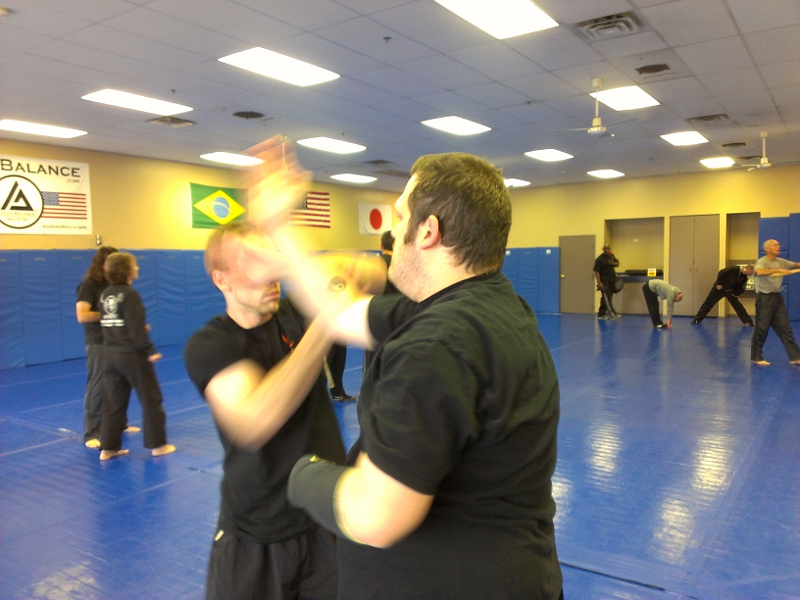
The second day, it was my great pleasure to train directly with Sifu Thomas Macaluso and his student Dale Napierski. Both Dale and Sifu Tom were familiar with the techniques being demonstrated and walked me through many of them. Anything I managed to pick up successfully that second day, I owe in large part to both of them — and also to Patrick, whose perseverance during the most demanding portions of the seminar helped encourage me to keep going.
There is one element of the seminar that took me completely by surprise. Guro Inosanto played music through an iPhone attached to a speaker dock during the training sessions, turning off the music to demonstrate technique and then switching it back on while students worked among themselves. While on occasion he played rhythmic, tribal music, for the most part he played easy listening from the 1960s and 1970s. While I’ve trained in schools where the teacher played as background music, for example, the soundtrack to Crouching Tiger, Hidden Dragon (almost obsessively), this type of training music was genuinely unusual.
Until you have trained knife drills or groundfighting to the sounds of The New Seekers’ “I’d Like to Teach the World to Sing (In Perfect Harmony),” Van Morrison’s “Dancing in the Moonlight,” and — perhaps most weirdly — “One Tin Soldier” (featured prominently in the film The Legend of Billy Jack), you have not truly experienced the martial arts. I would have given much to ask Guro Inosanto about his musical selections. I assume he was trying to keep the experience lighthearted and fun — and perhaps simply enjoying music that he personally likes.
Training with Dan Inosanto was an exercise in immersion. There can be no doubt, after seeing him in action, that he is incredibly knowledgeable about the subject matter he teaches. Ten hours of class time has to be the smallest drop in a bucket compared to the totality of what Guro Inosanto knows of the martial arts. To work with him is an experience that every martial artist ought to have at least once — and one that he or she will not soon forget afterward.
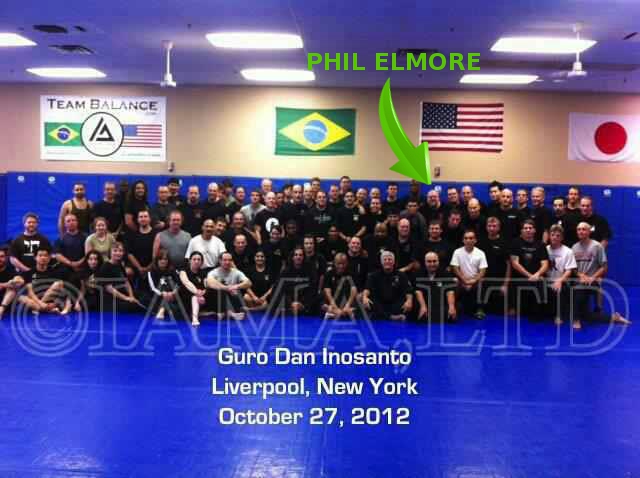
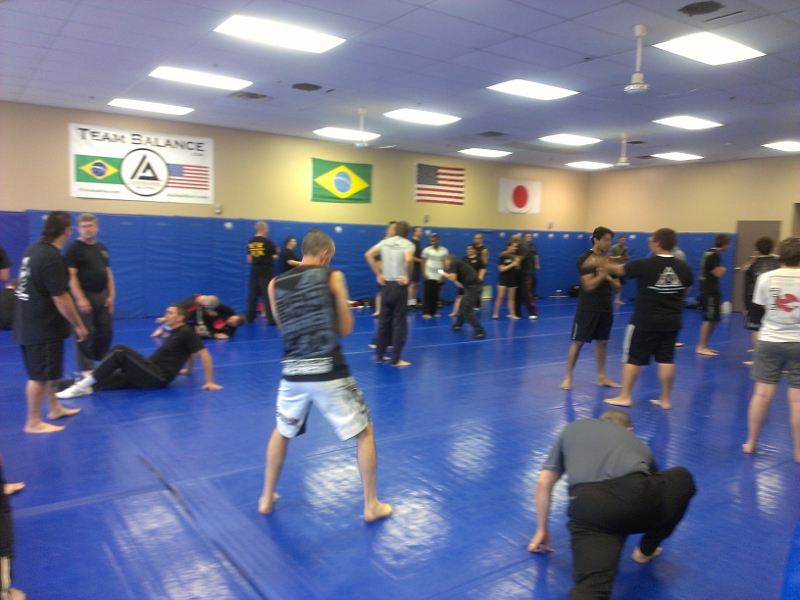
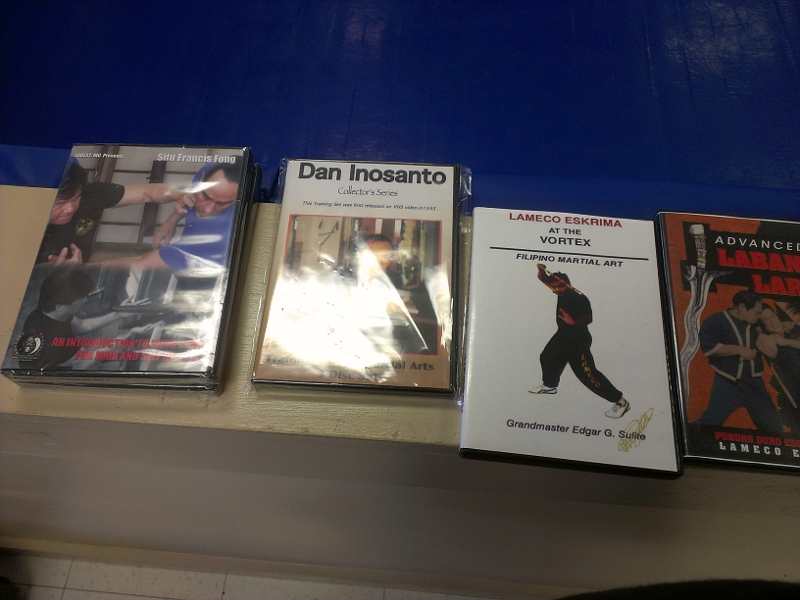
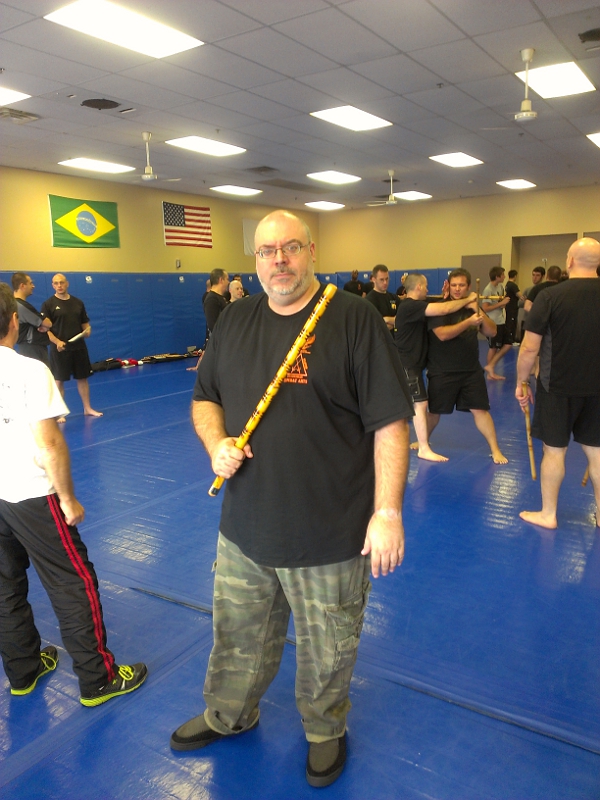
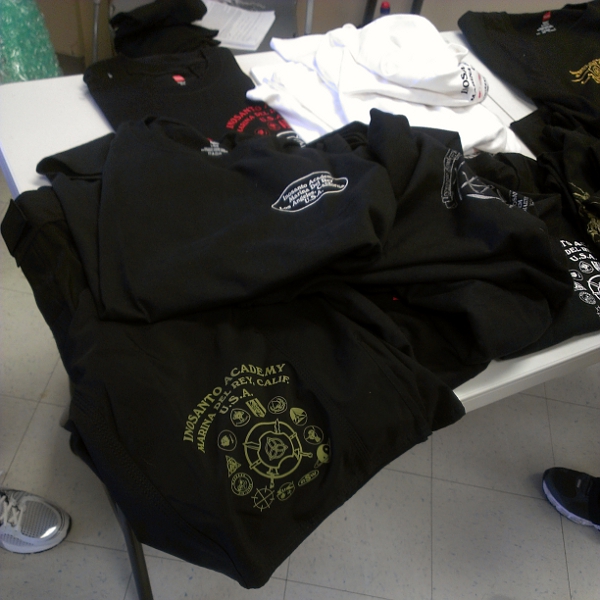
Just for clarification.
The video recording of the seminar is done for Guro Dan Inosanto’s personal use only, using his own video camera.
The reason that there is no recording or picture taking allowed is because some people have had taken pictures with Guro Dan and then passed themselves off as one of his students when they truly are not. (Some have even photoshopped themselves in.)
Many years ago, Guro Dan used to allow videos until they started ending up on eBay or some other selling site.
It is because of the abuse of a few that has eliminated the opportunity for the rest.
I assumed as much. The journalist in me was going nuts because I wanted to take photographs during the seminar, but of course I understand about people using photos and other material out of context. What I wouldn’t give to have access to those internal video archives…
I agree with your immersion observation. I also attended a 2 day seminar, back in 2010 in PA. As an experienced practitioner, I took away very little. The only thing I can remember is a whizzer to a hip toss. I would imagine that inexperienced people took away little or nothing. I even sat out and entire session that focused on essentially kickboxing, nothing I would add to my game at my age. Still, I highly respect his skill and knowledge. He is a true legend and it was an honor to train with him.